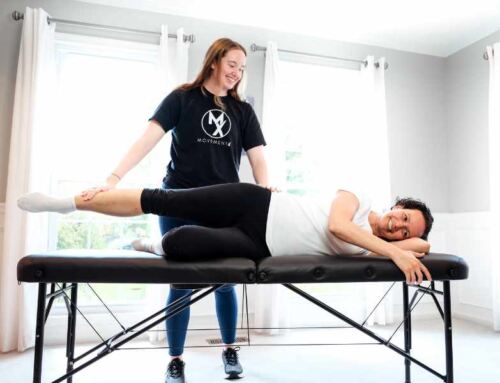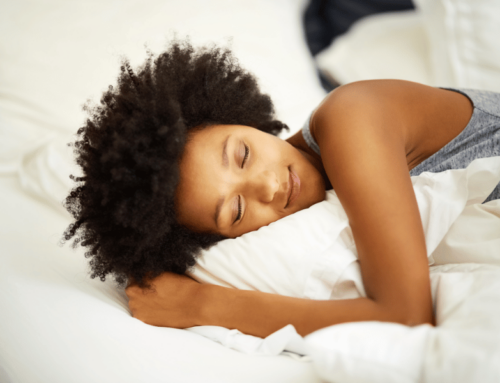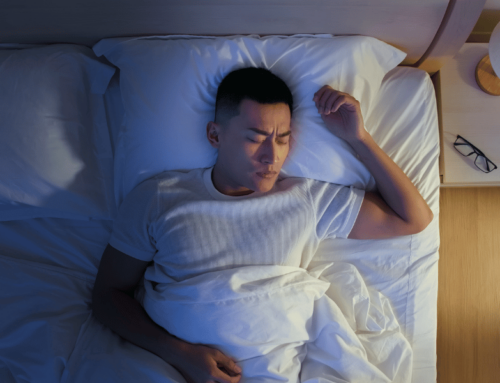6 Dynamic Walking Balance Exercises for Balance Recovery
Have you ever wondered why keeping your balance with your eyes closed is so much more difficult than with your eyes open? Or why walking on flat ground is manageable yet challenging on uneven surfaces like hills or gravel? If so, keep reading and you’ll learn how the balance system works. If not, feel free to skip ahead to the 6 balance exercises that can help you get started on better balance today.
How the Balance System Works
Balance is a collection of complex systems that work together within our body. Balance is primarily comprised of three systems that work together and feed information back to the brain to help one maintain body orientation, balance, and coordinate movements
1. Vestibular
The vestibular system is located inside the inner ear and is made up of 5 balance organs in each ear called the semicircular canals and otolithic organs. These organs are responsible for detecting rotational, accelerating, and decelerating movements of the head. For example; when you turn your head to cross the street, bend down to pick your child up or walk fast so you don’t miss your flight, each of these organs provides your brain feedback to help you maintain your balance so you don’t fall. Your vestibular system is responsible for sending information back to your brain via the vestibulocochlear nerve so your body knows how to move to keep you safe.
Want to take a deeper dive into the anatomy of the vestibular system? Check out this article on VEDA.
2. Visual
Generally, the visual system is the most prominent as it helps us to keep our balance by seeing where our head and body are in relation to the world around us. The visual system works with the vestibular system so that when we turn our head our eyes reflexively turn in the opposite direction to maintain eye contact with the target, this is called the Vestibulo-ocular Reflex also known as VOR. Try it now, focus on a word on this page, and turn your head side to side. A disrupted VOR can result in symptoms such as dizziness, blurry vision with head movements, and difficulty maintaining balance.
3. Proprioceptive
The proprioceptive system is comprised of your skin, muscles, and joints. It is the internal sense of your body’s location, movement, and action. When you move your nerves are sending information to your brain about how your body is moving. Proprioception allows your body to walk without thinking about where your foot needs to be placed next or turning on the light switch in a dark room.
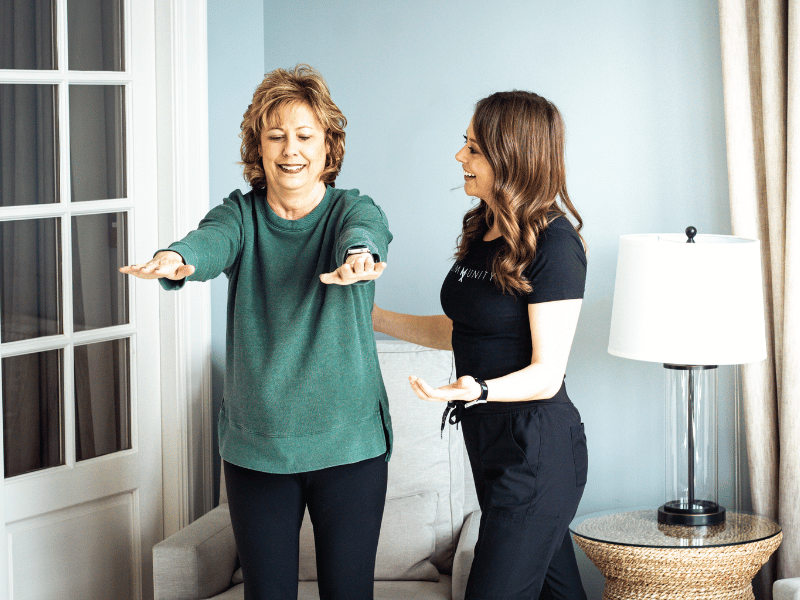
Each of these systems works together by sending information to the brain, in which the brain sends information back to the body telling it how to move safely. When one or more of these systems are impaired, or the brain has difficulty processing the information that it receives, we may have balance impairments.
The good news is that these systems can be trained to work more efficiently. Dynamic balance exercises are designed to improve stability and mobility which helps a person regain independence in daily activities.
Here are six dynamic walking balance exercises that can aid in balance recovery.
Dynamic Walking Balance Exercises
1. Walking Backward
How to perform:
Start by walking backward in a straight line. Focus on reaching your leg backward to perform a toe to heel gait pattern. Be sure to utilize a wall, countertop, or assistive device like a walker or cane as needed for stability.
Purpose:
This exercise requires greater coordination and awareness of the proprioceptive system, as walking backward eliminates the visual system’s guidance on foot placement.
2. Eyes Closed Walking
How to perform:
Begin standing straight up with a clear path. This exercise can be performed in a hallway or near a long countertop with hand support if needed. Be sure to ask for help if needed as you may veer to one side or lose your balance when first adding this exercise to your balance program. Begin walking forward with eyes closed.
Purpose:
This exercise relies heavily on the proprioceptive and vestibular systems. Without visual input, your body must depend on the internal sense of balance and movement.
3. Walking with Head Turns
How to perform:
Begin by walking at a comfortable speed turning your head to the right while taking a few steps then return your head to the center for several steps. Repeat on the opposite side. If you are unsteady, you should attempt this exercise close to a wall or with an assistive device as needed. Only turn your head far enough, or with enough speed that it makes your walking a little bit challenging. If you are staggering or bumping into walls, you are turning your head too fast or too far. Start slow and build your speed as you find the exercise gets easier.
Purpose:
This exercise is designed to enhance the integration of vestibular inputs with movement. This improves the body’s ability to maintain stability during complex movements and in environments where head movements are necessary, such as looking around while walking. By practicing walking with head turns, you enhance your ability to maintain balance and orientation when your visual field is shifting, which is crucial for daily activities and reducing the risk of falls.
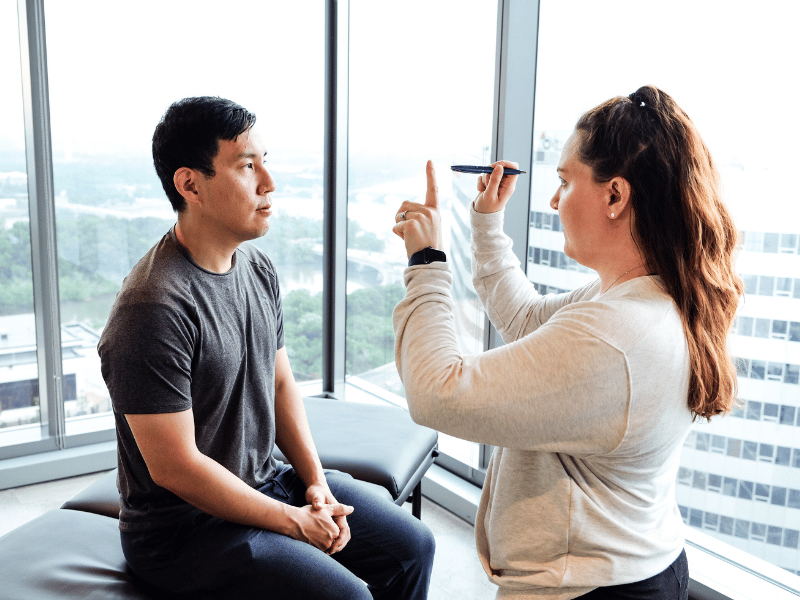
4. Walking with Speed Changes
How to perform:
Initially, this exercise is best performed over flat ground. In an open space, begin walking at your normal speed, then walk as fast as you safely can, followed by walking as slow as you can each for 3-5 steps. By altering your walking speed, it enhances your dynamic balance and coordination by requiring increased inputs from the vestibular system to maintain balance.
Purpose:
This exercise challenges the adaptability of your gait and balance systems, improving the ability to respond to sudden changes in speed, which is critical for tasks such as crossing the street or even going to the grocery store.
5. Walking on Uneven Surfaces
How to perform:
Start by walking on a variety of surfaces, such as grass, gravel, or foam mats. This can be done outdoors or in a controlled environment using different textured mats.
Purpose:
Navigating uneven surfaces activates the proprioceptive system, as the body must continuously adjust to maintain balance. This improves the ability to walk safely in real-world environments where surfaces are rarely even.
6. Obstacle Step-Overs
How to perform:
Set up obstacles like cones or small hurdles at varying heights. Practice stepping over these obstacles, making sure to lift your legs high enough to clear them without tripping. This can be done in a straight line or in a more dynamic pattern.
Purpose:
Stepping over obstacles requires precision and coordination, engaging all three balance systems (visual, vestibular, and proprioceptive). This exercise improves the ability to navigate environments with unexpected obstacles, enhancing overall mobility and safety.
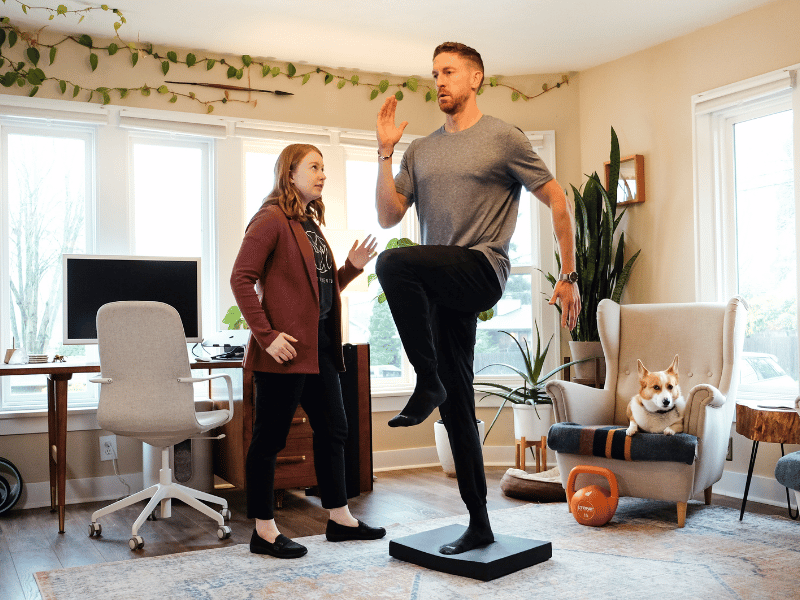
Conclusion
Regular practice can lead to better stability and a reduced risk of falls, contributing to a more active and independent lifestyle. Always perform these exercises in a safe environment, using support as needed, and gradually increase the difficulty as your balance improves.
While these exercises are only one piece of the puzzle, focusing on dynamic balance exercises tailored to individual needs can make a substantial difference in restoring quality of life and independence.
If you or someone you know feels off balance or dizzy, it may be that one of your systems is not working optimally or not integrating as designed.
Sign up now to request a specialized physical therapist for a targeted balance assessment and balance program tailored to your needs.
References
- Khan S, Chang R. Anatomy of the vestibular system: a review. Neuro Rehabilitation. 2013;32(3):437-443. doi:10.3233/NRE-130866
- Han BI, Song HS, Kim JS. Vestibular rehabilitation therapy: review of indications, mechanisms, and key exercises. J Clin Neurol. 2011;7(4):184-196. doi:10.3988/jcn.2011.7.4.184


